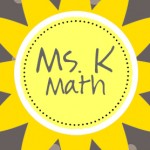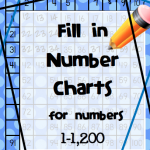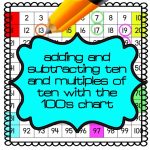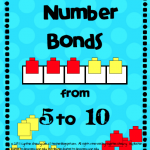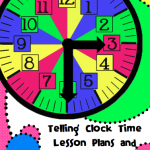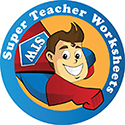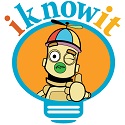Wow, Cute Way to Chart Parts of Speech
I came across these posters in a fourth teacher’s room at my school. She decided to display parts of speech on a shape poster to help students think about what types of words they use when they write. She made a poster for nouns, verbs, adjectives, and adverbs. She had displayed a house for nouns, a blob shape for adjectives, and the kite below for verbs. For some reason my other pictures didn’t turn out, but the kite picture managed to turn out, which is my favorite. Also, pictured below is another chart which she made entitled “RIP” for ‘dead words’ or words that are overused.
Inside a First Grader’s Mind…
Today the secretary came to me and recounted the following story to me which had earlier occurred in the office.
‘Michael’ came to her with a scrap of folded up paper on which his phone number was written so that the secretary could change his personal contact information. He read the phone number out loud to her. As his eyes peered from behind the scrap of paper he read, “five, one, five minus six, two, two, seven.”
I am sure the secretary had a grin on her face when he finished. 🙂 I am just glad he can recognize his numbers.
How Can You Use Literacy to Introduce Multiplication?
I have come across Amanda Bean’s Amazing Dream by Cindy Neuschwanderin several of Math Solutions lesson books, however today is the first time I have read the book. It wasn’t until last year that the book actually was ordered for our library. The book is about a little girl who counts EVERYTHING. She counts so much that she dreams about counting. Her teacher and her mother encourage her to multiply because it works better for counting large numbers. Towards the end of the book Amanda realizes that multiplying REALLY is better than counting everything. This book would also work well for teachers who are using CGI strategies with counting collections because on each page there are multiple illustrations of objects to count like squares in window panes, food, wheels, legs, sweaters etc. Arrays and things that come in groups can easily be discussed after looking at the pictures. Now I am going to recommend this book to all the teachers who are teaching multiplication.
What Will Improve American Education?
With all of the talk about reforming our schools and standards, we seem to be changing the law but just trading one set of regulations for another. I, too, hope that the common core standards and current school reform leads us to better educating children. However, I just read an interesting article that addresses the spirit of the law which seems to be missing from our educational system. This article by Margaret Spellings of The Huffington Post makes the point that our nation has managed to lead the world in cutting edge discoveries in medicine, technology, and business yet still lags behind other countries educational systems. Spellings proposes several paradigm shifts in her article. If American public schools treated parents as clients, and parents were able to move students to the schools that best suited their child, then would the educational system improve? If teachers were paid not by a scale, but by the amount of work they did and by how skilled they were, then would that improve education? Ultimately, what if competition drove our school systems and the voice of the clients, would that improve American education? If the private business sector has become great on these principals, then wouldn’t it work for American education?
My Favorite Way to Introduce Division…
My favorite way to introduce division is with Divide and Ride which is a book by Stuart Murphy. I have posted about it before, but since many of you are teaching division now or soon will be, I wanted to share some of the sheets that I have developed to go along with the book. These sheets are in varying levels of difficulty. The first one is easiest and they get slightly harder. I have used them with different grade levels. The first one I used with second graders, but most of them have been used with third grade. The first question on most of the sheets is the same because it can be easily figured out with direct modeling…but if you have all of the sheets you could easily differentiate for your students since they are similar. The last sheet incorporates a question with remainders. Feel free to download them and use them for free. Let me know if they work well for your class.
What’s a Mathnasium?
I was listening to Kim Komando (the digital goddess) on nationally syndicated talk radio today as I often do, and a word caught my ear. She mentioned a Mathnasium! I, being a math coach at my school, had to wonder what it was. So I looked up a Mathnasium on line and found out that they are franchises that teach students math like a Sylvan Learning Center. They aren’t very well known yet, and they are international. Not all states have a site. This is a franchise which may interest you if you are burned out in the classroom and have a little business capital. Since they aren’t well known yet and there aren’t many locations, now would be an ideal time to get in on this business venture.
In the Spirit of the Season…
Off topic, I don’t have any children personally, so I am always wanting to give to someone else’s children. I live on a small, quiet, dead end street with lots of children, but I don’t want to hand out candy all night on Halloween. In lieu of handing out candy, I found some adorable glittery, polka dotted treat sacks at Hobby Lobby–their Halloween items are 30% off. I have planned to stuff the sacks with candy and hand them out to the neighborhood kiddos before Halloween, so they are well endowed with candy :). I did decide to hang up my fall wreath early (about 3 weeks ago) and am wondering if I should get some pumpkins to put on the porch. A church down the street always sells some for a fundraiser…now to find a pretty ceramic pumpkin for my kitchen table.
Use This Smart Board Lesson to Instill Place Value…
I just finished making this Smart Board lesson for some first graders at school. Instead of using base ten blocks for the little firsties, we decided to use snap cubes sticks to help them master place value. I really like using these as opposed to base ten blocks at this age. Snap cubes (or unifix cubes) tend to be easier for their little hands to grab. They can always easily pull them apart and count them if they don’t trust that a stick of ten is truly a ten. Below is the simple SmartBoard lesson I made, which is available on TPT.
8 Free Math Websites for Your Classroom
1. www.math playground.com –free worksheets, math games, and interactive manipulatives
2. www.classzone.com–math games, interactive lessons, games, and math vocabulary cards
3. www.mathtv.org–interactive problem solving videos
4. www.hotmath.com–math games and learning activities
5. www.softschools.com–free worksheets and interactive games
6. www.coolmath.com–math lessons, interactive games, interactive math and art
7. www.math-play.com–free interactive games
8. www.nlvm.usu.edu–national library of virtual manipulatives
